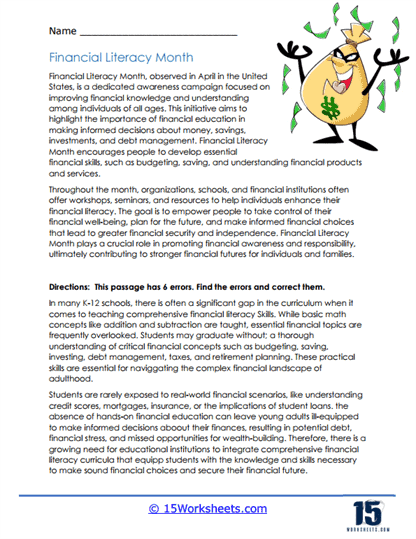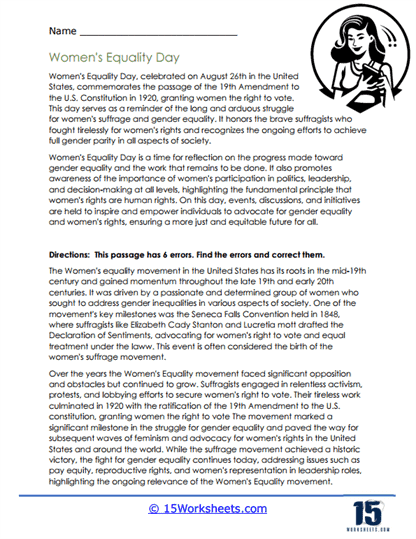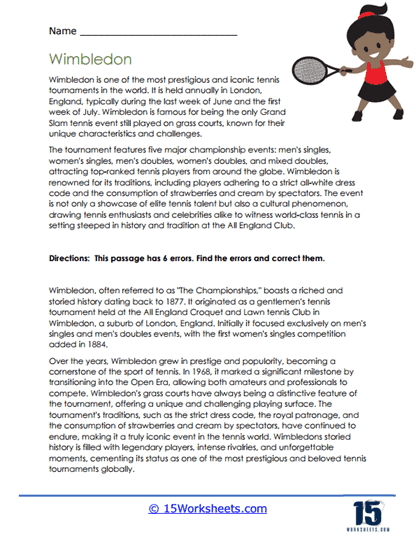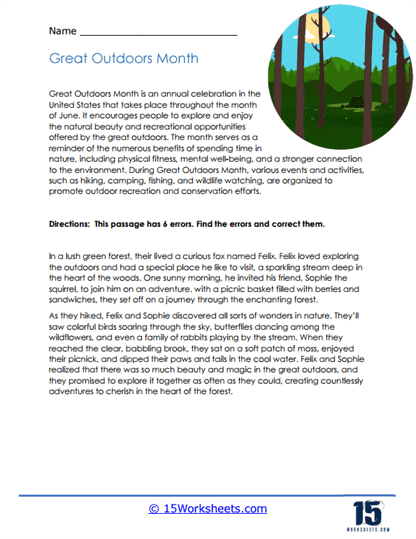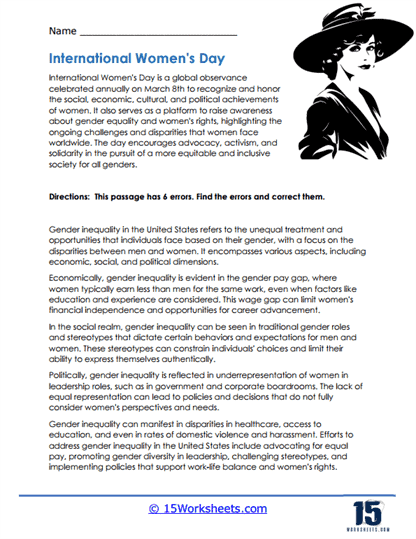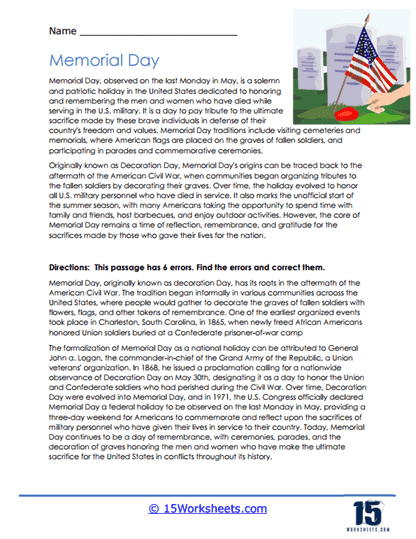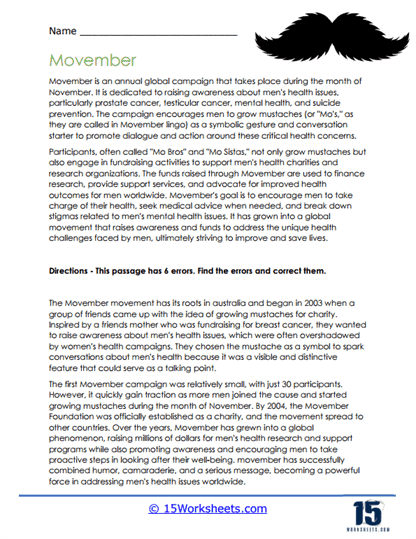Everyday Edits Worksheets
About These Worksheets
When we write something, on our first try, we might have some mistakes. These mistakes could be words that are spelled wrong, sentences that don’t make sense, or maybe we forgot some important details. Editing is the process of going back, reading what we wrote, and making it better.
Everyday Editing Worksheets are special sheets filled with short stories, sentences, or paragraphs. But there’s a twist! These passages have some mistakes in them on purpose. Yes, you read that right – on purpose! It’s your job, as a detective, to find and fix these mistakes. By doing this regularly, you become a better editor and writer.
Types of Edits to Expect
Spelling Mistakes – Sometimes words aren’t spelled correctly. Like writing “thier” instead of “their”. You’ll need to spot and correct these!
Capitalization – At the beginning of a sentence, we always use a capital letter. Also, names of people, places, or special things (like “Monday” or “Christmas”) should start with a capital letter. If they don’t, that’s a mistake you can fix.
Punctuation – These are little marks we use to make reading easier. The most common ones are periods (.), question marks (?), and commas (,). For example, if a sentence ends without a period, you’ll need to add one!
Grammar – This is a bit like the rules of language. For instance, “She go to the park” isn’t right. It should be “She goes to the park”. Fixing this is part of editing for grammar.
Sentence Order – Sometimes, sentences might be jumbled up and not make sense. You might have to rearrange them to make the story clear and fun to read.
Adding Details – Maybe a sentence or story needs more information. For example, instead of “He ate the ice cream,” you could write, “He happily ate the chocolate ice cream with rainbow sprinkles.”
Why Are These Worksheets Important?
By practicing with our Everyday Editing Worksheets, you become a word detective. You’ll get really good at spotting and fixing mistakes. This will help you when you write your stories, essays, and letters. Plus, it’s fun to find and correct the errors!
Writing is an art, and like all arts, it requires refinement. Clarity and Understandability are at the core of this refinement. The main goal of writing is to convey a message or share information. If there are mistakes or if sentences are jumbled, it can cloud the reader’s understanding. Editing ensures that writers present their ideas in a clear and comprehensible manner.
Another aspect that can’t be ignored is Credibility and Professionalism. Imagine reading a business proposal filled with errors; it’s likely you’d doubt the company’s competence. Properly edited documents showcase a meticulous nature and uphold the reputation of the writer or organization. Alongside this is the necessity for Consistency. It’s crucial, especially in extensive documents, to maintain a steady style, voice, and presentation. This unity in writing makes it more effective and reader-friendly.
Errors can sometimes result in unintended meanings. The difference between “Let’s eat, Grandma!” and “Let’s eat Grandma!” underscores the significance of avoiding Miscommunication. Editing catches and rectifies these potential pitfalls. But beyond correctness, there’s the rhythm of the text. Improving the Flow ensures the piece remains engaging, with ideas transitioning smoothly.
Refinement and precision are integral parts of the editing process. Removing redundancy, repetition, or irrelevant information ensures each word in the document adds value. Moreover, when writers undergo the editing process, especially if someone else does the editing, it offers valuable Feedback and Learning opportunities. Recognizing and learning from common mistakes aids in the continual improvement of one’s writing skills.

